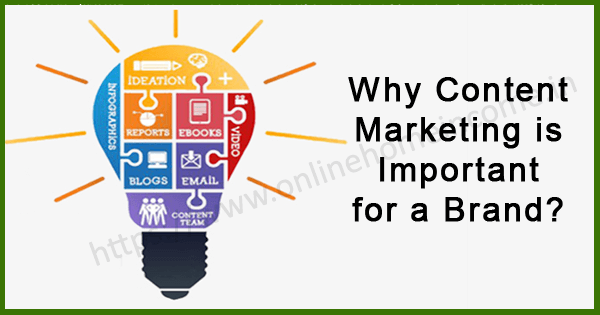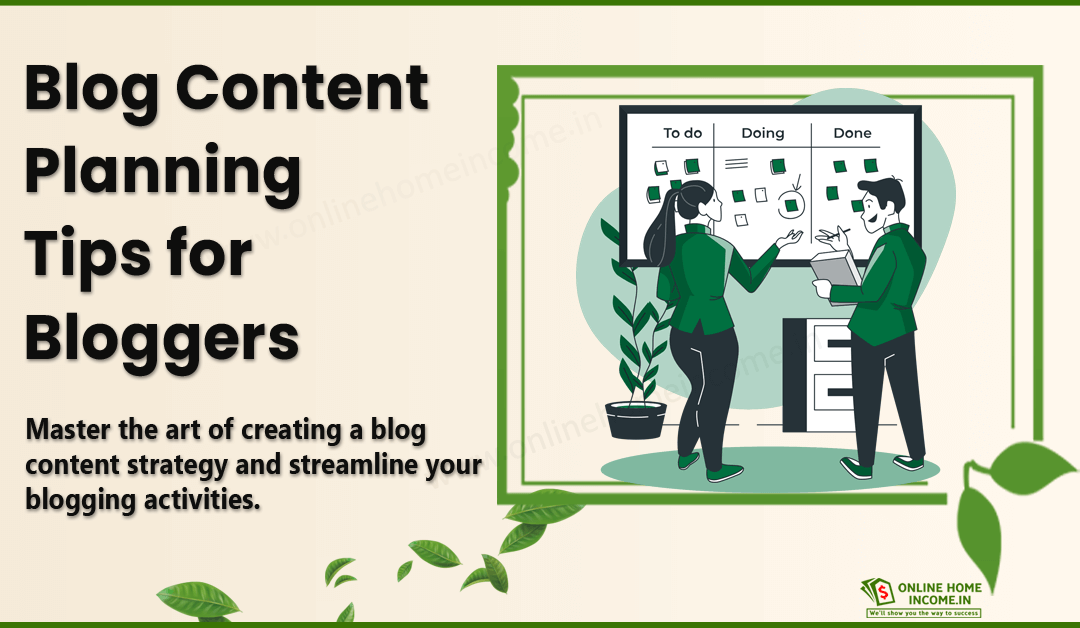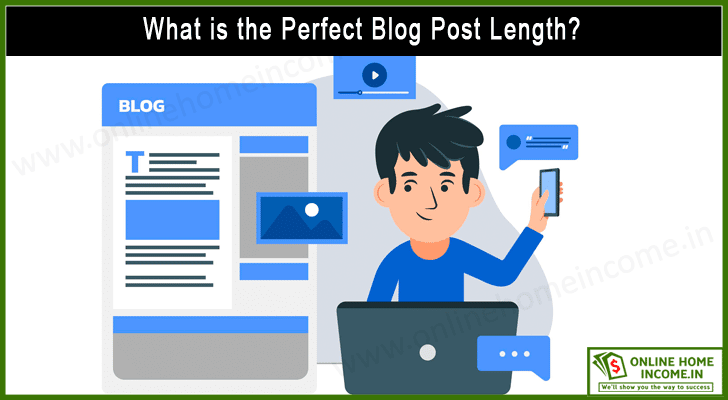Let’s learn how the Content Maturity Model helps identify your content marketing goals and the reason behind successful marketing.
If there is a desire for significant progress in the field of content creation, which also includes copywriting, blogging is the best way to accelerate.
This helps in the area to understand and adopt various methodologies that improve the knowledge of content creation.
There are a number of methodologies that describe different ways of creating and improving content.
This time the focus is on a methodology that aims to determine the level of knowledge of an individual or company in the context of the effects of content creation.
In other words, the Content Maturity Model, also known as the Content Capability Model, i.e. Content Assessment Ability Model.

For example, if in your company you often launch new products or services on the market, you should have in writing defined what are all the steps in that business.
What business procedures and which job positions participate in the procedure of launching new products or services?
This should include the way in which, in this case, the content that describes the new product or service is created. Such a written-defined way of doing a particular work is called a work methodology.
You need to compare your current methodology of working on certain jobs with the methodologies of other companies doing the same job.
You should preferably study whether you might be able to do some things differently from the experiences of other companies to improve your performance and results.
What is the Content Maturity Model For?
If we look at the level of our knowledge about content creation today, we can ask the following questions:
- Have I heard of the Content Maturity Model and do I use it in my business?
- Do I use other methodologies in my work to improve the way I work?
- Why would I want to know that when it looks like some useless theory?
- I am interested in HOW to precisely improve the creation of content (step-by-step), and not to read/watch something that does not give me such answers!
Look at Google to see what the phrase ‘Content Maturity Model’ incorporates by looking at the different images.
It describes a number of different ways of looking at the level of knowledge about the content creation business.
And you can read the texts “Understanding the Content Maturity Model” or “The Content Operation Maturity Model: Where Do You Fall?”
3 Important Content Maturity Model
On this occasion, we will list the 3 most important reasons why it is convenient to use this model of determining knowledge about the job of creating content:
- When you know how much you really know your job then it will quickly become clear to you.
For e.g. why it is difficult for you to sell content creation services to companies that are creating a website for the first time? Also, it will become clear to you why you sell content at one price although you could charge much more.
At some times, you know about individuals and companies that charge 10 times more for one text than you manage to charge.
- More importantly, to know what you do not know about your business, and what is next you should learn to significantly improve your content creation results. This applies to any individual or company, regardless of the level of current knowledge.
- The further you progress, the clearer it becomes to you what you need to learn next to continue to progress in your business.
Getting started with the Content Maturity Model comes down to finding the right methodologies from the many on offer.
Which can obviously help you quickly understand what stage of content creation development you are at. And what you need to learn next.
You may be in different stages of development for different segments of content creation – e.g. you know SEO copywriting very well, but you do poorly in creating sales content.
If you still think that all this is a mere theory, in your case there is still a lot of room for improvement in your business.
How Much Do You Use (Content Creation) Strategy in Your Business?
The Content Maturity Model is a strategic framework for understanding and improving the content creation business.
The ability to understand marketing by individuals and companies is mostly structured according to the level of knowledge they have about marketing.
In some parts of the world, as many as 90% of individuals and companies do not use strategy in their work because they do not see reasons why they would do so.
Only up to 10% of individuals and companies in their business understand the ways to create and implement strategies that bring significant business results.
For example
If the owner of a company that sells products online does not understand why he has to pay € 500, € 1,000, or € 2,000 for better content to achieve more significant sales results.
You certainly cannot sell him content creation for that price. If that owner saw, experienced, and understood that higher-quality content brings more income – then he will invest more funds to create content.
In order to have an understanding of the value of creating quality content, a company must have a practice of good online results.
The results last for a longer period of time to convince those responsible that better quality content brings better effects to the company.
Only when the understanding of the main people in the company about the value of creating content begins, only then can more serious development and investment in content begin as well.
What’s Content and Why Is It So Important for Your Brand?
We are sure that you have heard countless times so far that ‘Content is King’ and that you should focus your online marketing strategy on it.
It is obvious that this is not a new idea and that people are aware of how important the content is.
In recent years, content has become more important than ever precisely because it is the number one tool when it comes to engaging and encouraging users to buy a product or service.
- Content is much more than just filling out your web pages and social networks.
- Your content serves to build trust among your consumers and helps you create brand awareness.
- Better content brings customers to your site. From there, only one click separates them from the conversion.
Content marketing has been a great way to set your brand apart from the competition in the past few years.
Today, content marketing has become a necessity for every serious brand. This type of marketing singles out great brands compared to the average ones and connects them with consumers.

Importance of Content Marketing
Unfortunately, many companies do not devote enough time and resources to content marketing.
Because they do not see it as a relevant channel to communicate with and engage their audience.
It results in failing to achieve their marketing goals. On the other hand, brands that create meaningful and exciting content get huge benefits from it, both internally and externally.
The power of content marketing lies in its ability to successfully embrace 4P marketing (product, price, place, promotion).
Although it may not seem like it at first glance, the content speaks on behalf of your product, highlights its price (through ROI), positions your product on the market, and directly promotes it.
Wondering What Content Marketing is in its Core?
Content marketing consists of creating and sharing relevant content in order to engage users and encourage their purchase of products or services.
However, the more they realize the power of content, the brands more and more rush to create more content, and organic content declines.
This is because today it is not enough to just have engaging content, but brands have to invest in paid content advertising to reach a wider target audience.
What does all this mean? Well, promoted content is an activity that involves publishing content with a clear goal of promoting content with paid channel distribution.
- This may include PPC campaigns, paid social media posts, sponsored placements, and any other forms of paid promotion.
- Paid content advertising (or promotional content) is a great way to increase the relevance and visibility of published content.
- However, paid ads must be consistent with your brand’s content marketing strategy or general online goals.
- Promotional content is a fast and effective way you can increase your audience, introduce some new opportunities, and enable potential sales.
Instead, only when brands are focused on creating unique, high-quality, and personalized content that is, most importantly, useful and exciting to your target audience, the power of the content is visible.
You can achieve this through text, videos, photos, infographics, blog posts, online seminars, or any other content your audience desires.
If you provide your current and potential customers with content that interests them, is useful to them, and entertains them at the same time, they will trust you and return to your online platforms every day.
How to Use the Content Maturity Model?
The Content Maturity Model has 4 phases of developing knowledge about the job of creating content.
Knowledge at the level of primary school, high school, college, and practical master’s degree (Master of Business Administration/MBA).
Typically, Maturity Models are presented in 3, 4, 5, and 6 stages of development that cannot be skipped:
1. The Phase of Not Understanding the Content Creation Function
It refers to 50% -70% of individuals and companies on the web worldwide, which mostly do not operate through websites.
But through platforms such as Amazon, Booking, Facebook, Instagram, etc. For these individuals and companies, creating content comes down to creating images and descriptions of products and services.
At some point, these individuals and companies begin to understand that their success on the platforms depends on the quality of the display of products and services.
But the question is when that moment happens. A large number of companies operate very successfully in this phase of development and never move to the next phase.
2. The Phase of Variable Content Creation Results
It is characteristic of about 90% of website owners, or a total of 20% to 40% of all individuals and companies that use the website.
This phase of the development of content creation quality is characterized by variable results of the created content.
Where there is not yet enough knowledge to determine why some content went well and some did not.
Only when the company starts creating content that brings good results on a regular basis, conditions are created for the transition to the next phase of improving content creation.
In order for a company to move from this phase to the next phase, the average time of its duration is between 2 and 5 years, if the company is focused on improving the effects.
The majority of companies get stuck in this stage of development. This phase lasts a minimum of about 6 months.
3. Content Effect Optimization Phase
It is characteristic of 7% – 10% of individuals and companies that do business online.
In this phase, intensive optimization of content in relation to sales effects, promotional effects, possibilities of informative effects of content, visibility on search engines, etc. begins.
At this stage of development, the main people in the company begin to understand the reasons why it is important to create a content strategy, and then the implementation of that strategy slowly begins.
In order for a company to move from this phase to the next phase, the average time of its duration is between 4 and 5 years, if the company is well focused on improving the effects.
Most companies never overcome this stage of development. About 3 years is the minimum duration of this phase.
4. Content Effect Integration Phase
It is estimated that only 1% to 3% of online companies find themselves at this stage.
It is equally represented in companies that have online sales targets, as well as in companies that have online branding targets.
The main feature of this phase is the merging of different proven content creation strategies (integration).
Their implementation is in relation to the characteristic (specific) classic and online business goals (omnichannel).
At this stage, promotional effects in relation to different content formats, their use through different communication channels, ways of creating different types of content effects, etc. are very well known.
The better we understand what stage of our own development we are in, the better we understand to whom we can sell our services, and why we do not need to and cannot do that in some cases.
Individuals and Companies That Create Content
They are also in different stages of knowing the characteristics of their own business.
Content creators who are in the first two stages of development very often, through their ignorance, create additional problems for the companies that hire them.
Famous ‘experts’, ‘gurus’, and the like are in the 2nd phase of development, where they managed to get good results several times, and then they think ‘This is it!’.
These are usually people and companies who do not even know how much they actually do not know.
The characteristics of individuals and companies that sell services with a higher level of knowledge of their business (which are in the third or fourth stage of development) are very different from the previously mentioned:
- In the beginning, they sell their services more expensive in relation to the effects of what they can do.
- They explain very well what they do, how they do it, and what can be expected of them.
- Clients can easily monitor the effects of this work and understand the results of these activities.
- These individuals and companies are also recognized by the fact that they often do not have time for new clients (individuals).
- Companies are rapidly hiring new employees (without firing other employees). This happens because they do their job well.
Companies and individuals from the 3rd and 4th phases of development, who hire content creators, know from the very beginning.
Who they should hire, when they should hire, why they hire them, and what they can expect from them.
It is very rare for them to hire individuals and companies who know less about creating content than they do.
The previous paragraph is also the answer to the question of why it happens that some cannot charge much more for their service.
The price they charge even though they know that those prices can be much higher. Basically, they have to improve the quality of their work much more.
Last Thoughts
Content Maturity is a Model for Improving the Quality of Content Creation and Sales of Content Creation Services
As mentioned earlier in this text, the main job of adopting the Maturity Model for content creation is to study different methodologies.
And the type to reach the most comprehensible solutions on how to get the necessary knowledge for progress in the field of content creation.
It is very important to learn how to apply this knowledge about the characteristics of companies in different stages of Content development.
In order to improve the narrative that promotes the sale of content creation services, according to the knowledge and needs of companies in different stages of their own development.







